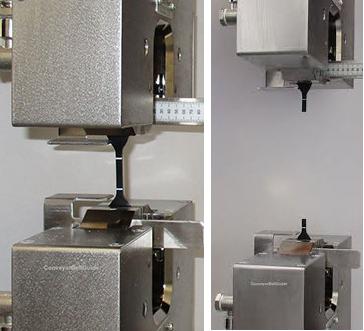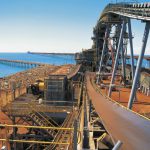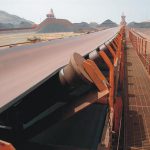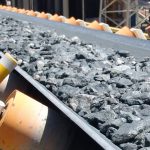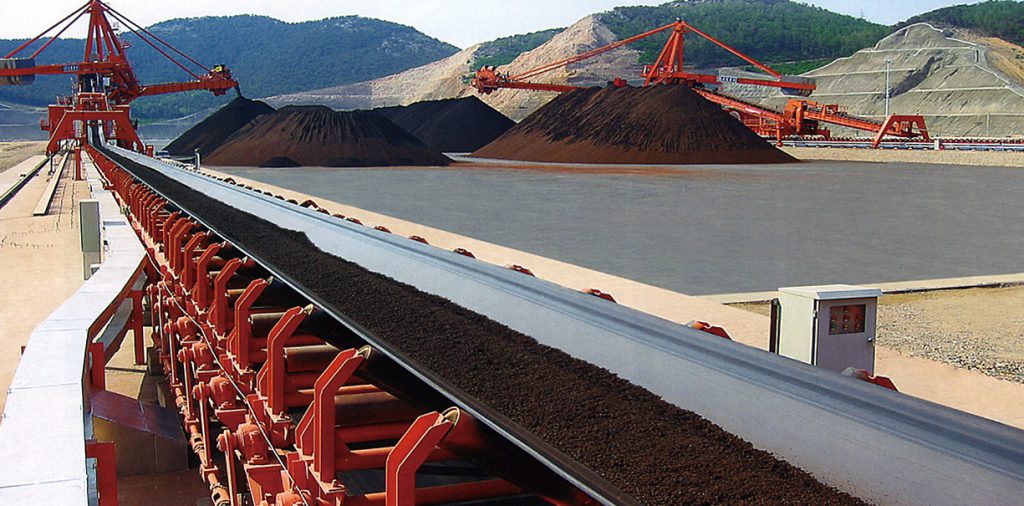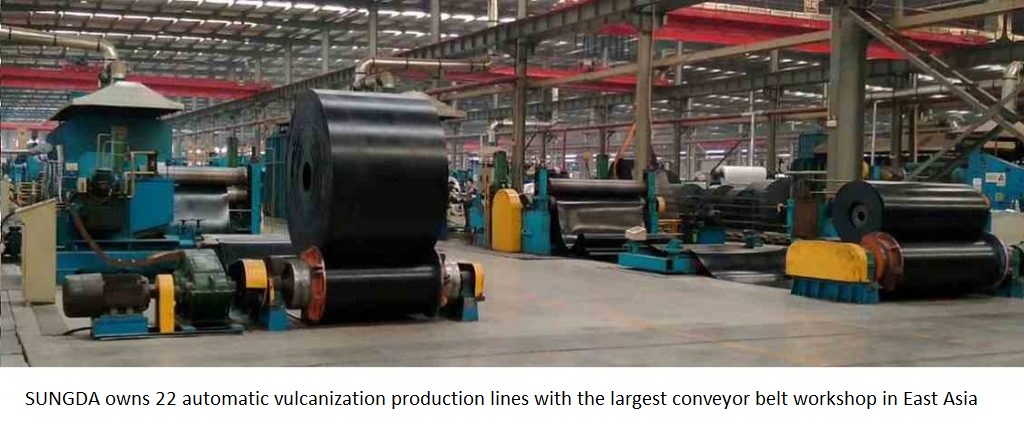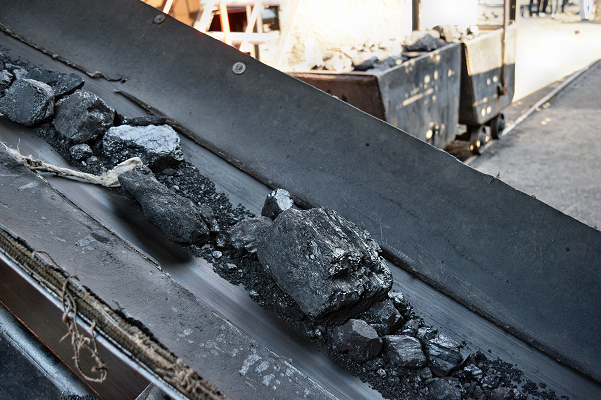How to Choose the Cover Thickness of Conveyor Belt?–SUNGDA Conveyor Belt
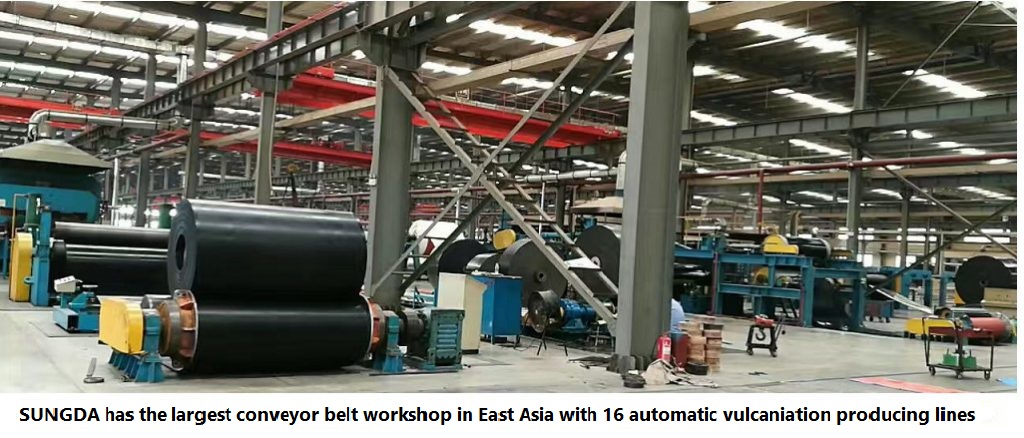
There are many factors that influence top and bottom belt cover thickness:
1. Top cover selected for wear life (abrasion, gouging; temperature environment) based on rock properties, chute design that defines impact and shear, and product temperature. It is not that the thicker the cover rubber of the conveyor belt, the better.Generally, the heavier the item, the longer the conveying distance, the greater the pulling force of the conveyor belt, and the thicker the thickness of the conveyor belt
2.If the material required by the conveyor belt does not require strong abrasion resistance or good tensile strength, you can choose a relatively thinner thickness, which will not only save the cost of the conveyor belt, and can reduce the energy consumption of the conveyor line, and improve the conveying efficiency of the conveyor line. For example, in the primary conveying stage of a mining or rock crushing field, because the rock is hard and heavy, it is easy to scratch the surface of the conveyor belt, so it should choose a top cover of no less than 8mm thick, if the rock is broken into 5-8cm pieces in the second and third stages, then you can choose a thickness of top cover about 5mm to reduce costs and energy consumption.
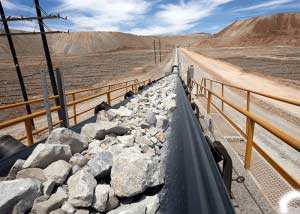
3.In addition, it depends on the use environment of the conveyor belt. The thickness of the top cover of the heat-resistant, cold-resistant, oil-resistant, and acid-resistant conveyor belt should not be less than 4.5mm, and the thickness of the upper and bottom covers should be multiples of 1.5, especially for heat-resistant conveyor belts If the rubber surface is too thin, the heat of the material will soon penetrate the rubber surface and damage the fragile fabric carcass structure, resulting in a sharp reduction in the life of the conveyor belt. Generally, the top cover thickness of the heat-resistant conveyor belt at 150°C is not less than 5mm. The rubber surface is not less than 2mm.
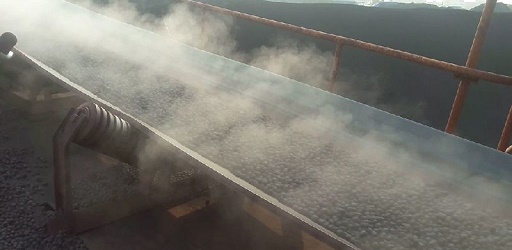
4.The bottom cover selection has many properties to consider based on belt construction ( steel cord vs. fabric carcass). For steel cord belts, the minimum cover gauge often sited must be > 70% of cord diameter to resist shear stress of cord pulling through the bottom cover. Studies have been performed with pulleys of varying diameters and belt tensions to find the bottom cover threshold. Not so easy as 70%. Belt rubber fatigue under cord is dependent on many parameters including pulley diameter, cord diameter, belt tension, belt safety factor, ambient temperature, type of belt construction ( trough or pipe) and internal reinforcements, type of idler shape, spacing, and roll diameter, clean or dirty side belt contact, snub, bend or drive pulley and idler transition arrangement, ……
Conveor Belting is the most expensive item in conveying and the amount of rubber in the covers should be minimized to match the life expectancy of the belt. Breaker layers and compound mix are irrelevant/excluded. Rubber wears down and when it has reached the limit it gets thrown out. Ideally, the belt life should be an equal dividend of the designed plant life. If the plant life extends beyond its design it doesn’t matter: the operator is saving CAPEX(capital expenditures) somewhere. As a first step, you can adopt CEMA recommendations for your perceived duty. Center distance and loading frequency/severity play an important part. Top and bottom covers need to have the same life.
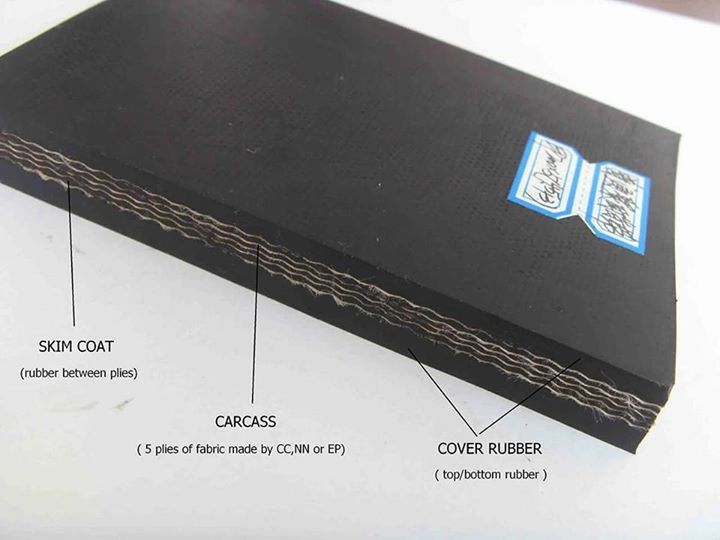
Sungda Conveyor Belt Co.,Ltd.

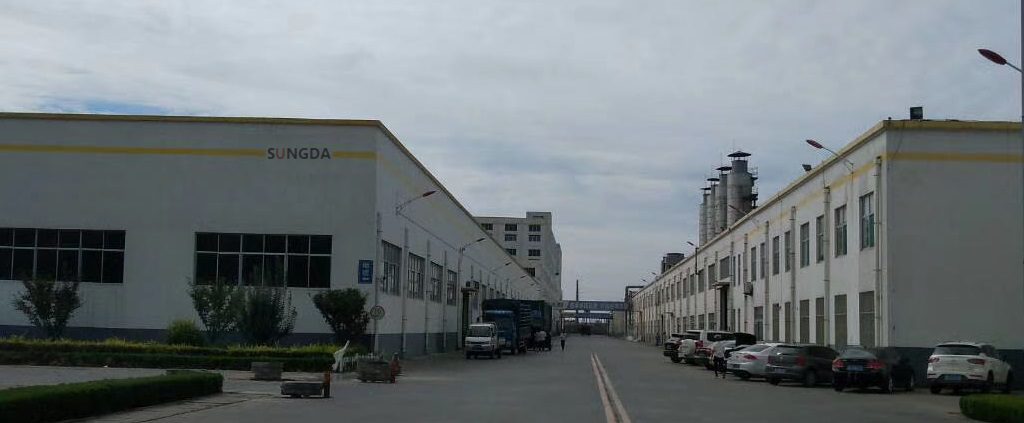

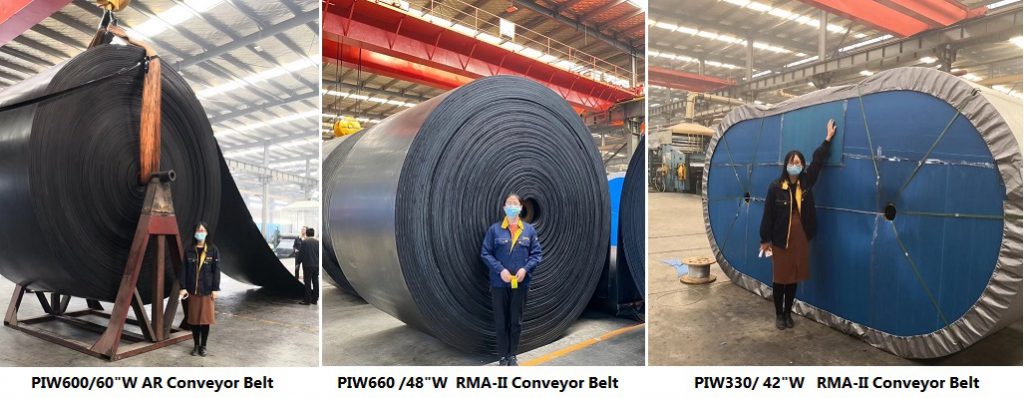
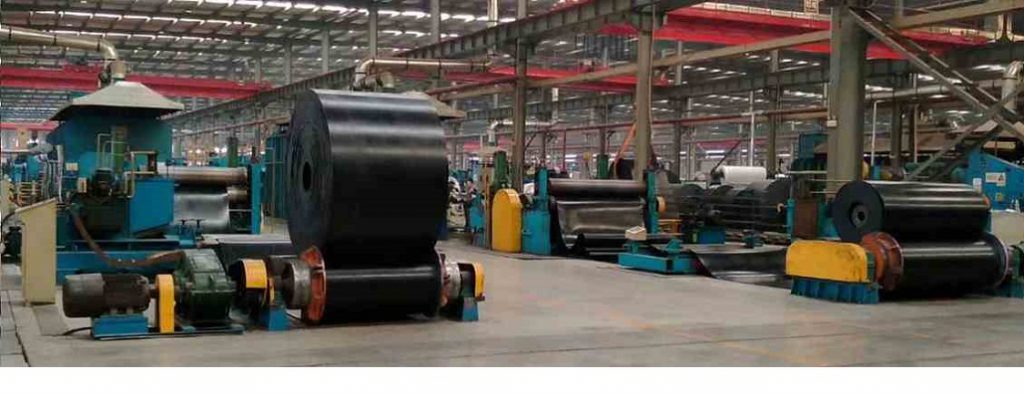
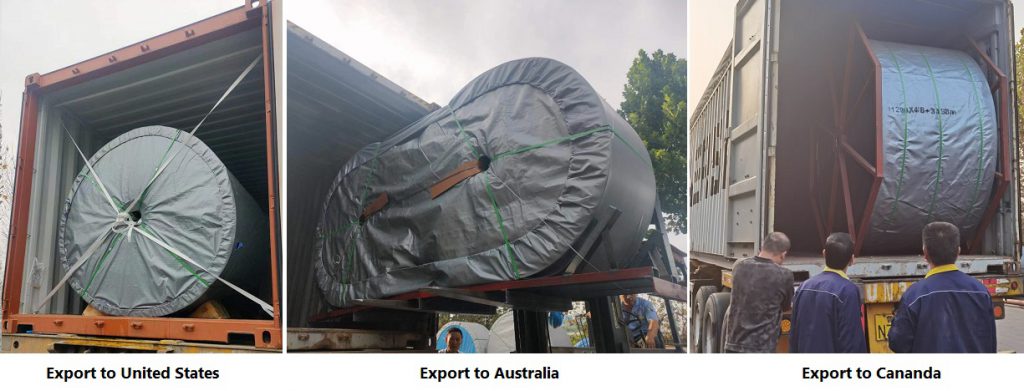
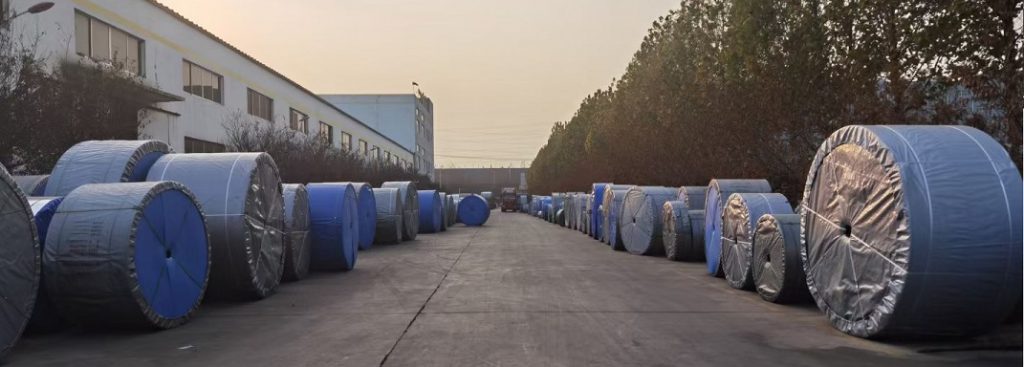
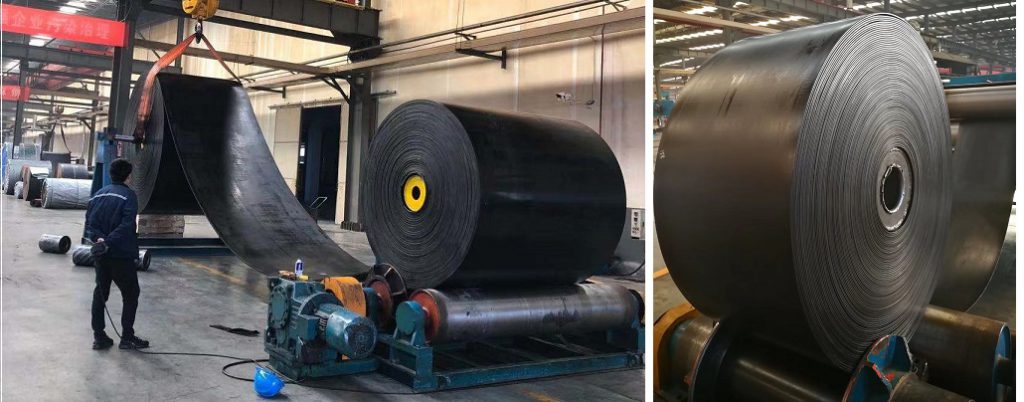

Tags: belt thickness selection,conveyor belt thickness,EP conveyor belt

